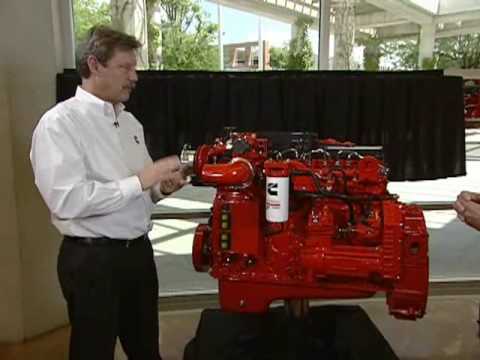I have to admit that the Cummins ISB 6.7 Liter diesel engine is the superior model for medium duty power in our school buses. The fit and finish we found with the new international buses we received this year is second to none. The IC people are listening to their customers with new changes made to accommodate customer concerns.
I noticed a few things last year… for instance the coolant pump was mounted underneath the entrance step which was hard to access and too far away from the main coolant heater hoses. It was relocated on the firewall. This is impressive and the dealer in town treats us very well.
The relationship with your bus dealer is extremely important because of the experience and knowledge they have with their product. This is great for our shop when we’re scratching our heads with a problem that they may have encountered several times.
The ISB Overview
I want to cover some engineering changes and standard specifications with the ISB. Cummins has gone the extra mile to keep up with emissions reducing harmful exhaust gases by 90%. This is in the 2010 version which was when DEF (diesel exhaust fluid) and SCR (selective catalytic reduction) was introduced.
DEF is used on a 2% ratio to diesel fuel so for every 100 liters of diesel used 2 liters of DEF is consumed. We will be checking every service for DEF levels and operators can monitor the dash gauge. We estimate every 10,000 km the 12 Liter tank will need to be topped up. The engine performance will drop significantly if the level drops too low but there are enough warning devices on the dash to keep things running smoothly.
On the top of the valve cover there is a coalescing filter or in regular terms the crankcase filter that takes care of the blowby gases. There is the EGR cooler that cools EGR gases creating more density which reduces exhaust temperature and emission levels. The fuel system is Bosch high pressure common rail which again reduces combustion by-products using higher pressure and finer injection spray patterns.
The VGT (variable geometry turbocharger) acts with the regeneration process blocking exhaust gas flow to increase temperatures in the DPF. The VGT also does the engine braking… changing it’s angle to restrict exhaust flow. The VGT is Cummins technology and is a really amazing feature that works well with the ISB. Like I said I’m a fan and appreciate how hard Cummins is working to reduce oxides of Nitrogen (NOx) by 90%.
I’m not impressed with these DPF delete kits out on the market now that bypass the emissions on diesel engines. It’s all about our conscience and our responsibility to the environment. I’m not trying to wave a flag or anything but I’m sure you have noticed how the weather has changed across the world and the melt down going on in the Antarctic. It doesn’t matter how much of a pain it is to troubleshoot these engines and the money spent to fix them. What matters is the oxygen and our atmosphere that we need to survive.







